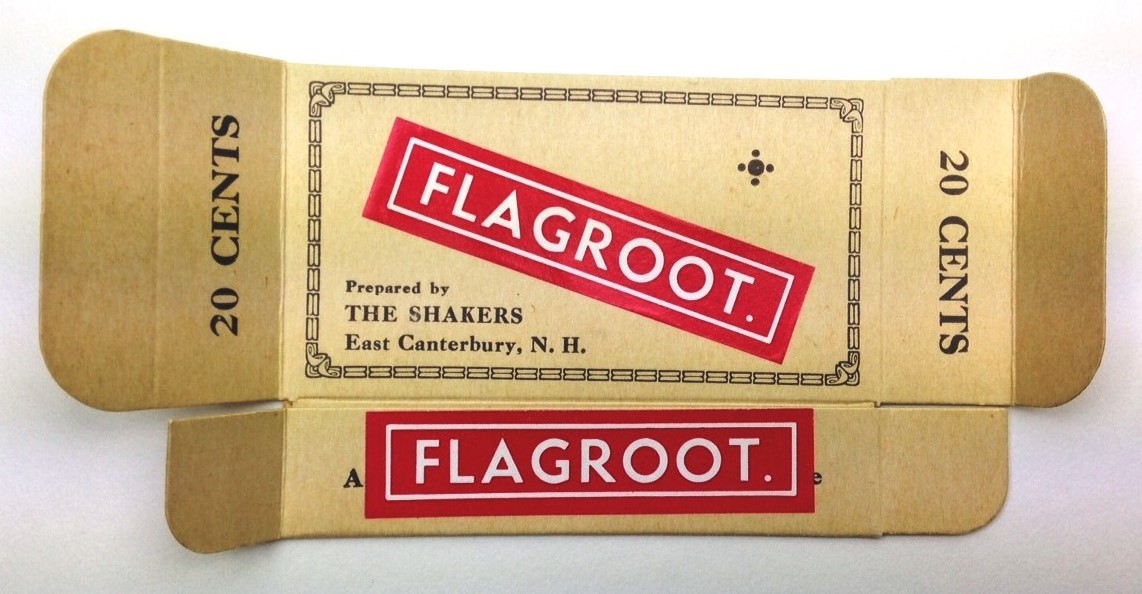
Flag Root Box, Canterbury, NH, c. 1950. 200?.21901.1
All of us here at the Shaker Museum suffer under the distinct disadvantage of never having tasted candied flag root, so can only preface this discussion with a comment Sister Marie Burgess (1920-2001), who worked in the Shakers’ confectionery business for thirty years, made one day to our Director of Collections and Research in the […]

Flag Root Box, Canterbury, NH, c. 1950. 200?.21901.1
All of us here at the Shaker Museum suffer under the distinct disadvantage of never having tasted candied flag root, so can only preface this discussion with a comment Sister Marie Burgess (1920-2001), who worked in the Shakers’ confectionery business for thirty years, made one day to our Director of Collections and Research in the kitchen at Sabbathday Lake, Maine. She said one of her least favorite jobs while a Shaker was making candied flag and that after all the disagreeable work she no longer cared for the taste of it either!

Dried sweet flag root
Sweet flag (acorus calamus), often called calamus, has a rhizomatic root that would look familiar to anyone who has divided irises. Both the leaves and the roots are aromatic, and the dried root has been used in place of ginger, nutmeg, and cinnamon. Its medicinal properties have been utilized in many traditions, including Ayureveda and among some American Indian tribes, including the Penobscot. It’s believed to carry sedative and digestive benefits, and has been used as an hallucinogen as well.

Prof. Dr. Otto Wilhelm Thomé Flora von Deutschland, Österreich und der Schweiz 1885, Gera, Germany
Sweet flag was harvested, cleaned, thinly sliced, boiled several times, and candied with crystals of sugar. The slicing, clearly the most tedious part of the process, was made easier by a special rotary cutter powered by an old Boston brand sewing machine. The sewing machine, given to Eldress B. King by her grandmother, was converted to a flag root cutter by the Canterbury brothers. They removed the part of the sewing machine that moved the sewing needle up and down and re-purposed the spinning motion produced by the foot treadle to power an attached four-bladed cutting head that thinly sliced the flag root. The tin-covered trough helped guide the root into the cutters and the sliced pieces were collected in a tin container at the front of the machine.The candied flag was packaged in boxes and sold in Shaker gift shops. It continued to be made at SabbathDay Lake well into the 1950s.

Flag Root Cutter, Boston Sewing Machine, Canterbury, NH, c. 1873. 1953.6582.1